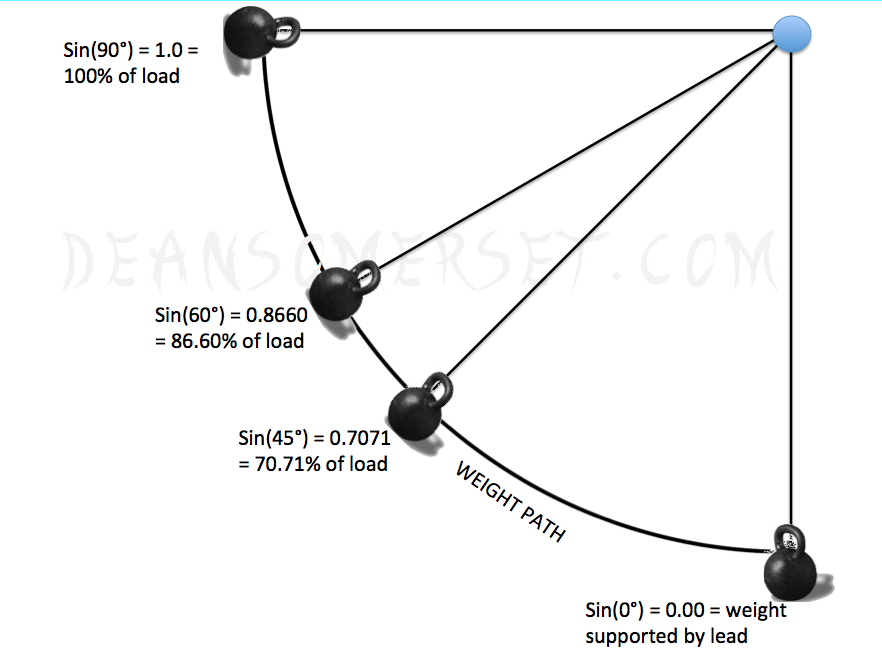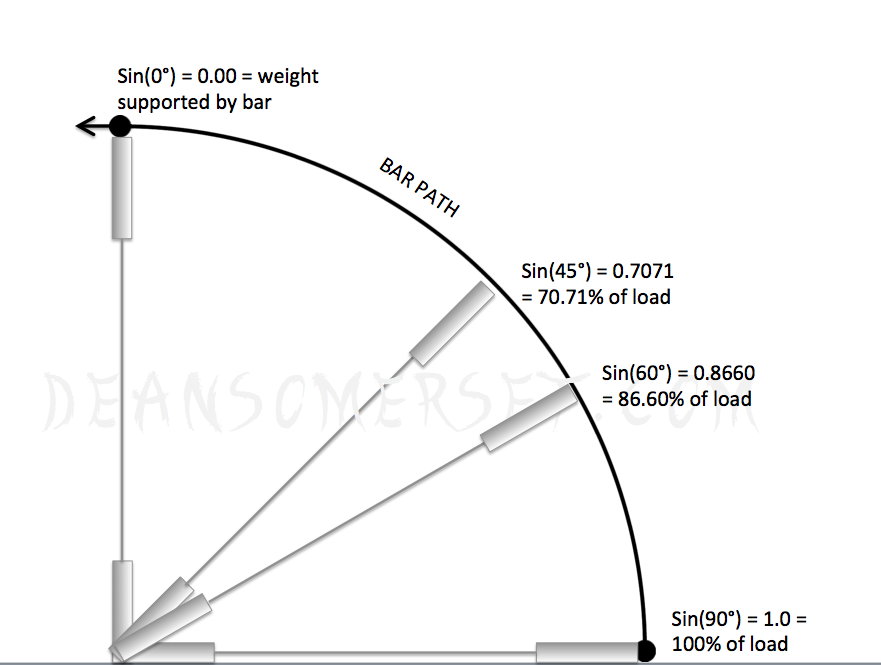Best Exercise In Ever: Pendulum Press
About a week ago I decided to hook a band up from my squat rack, hang a kettlebell from that and do some standing presses with it just for fun. People seemed to take to it on Instagram and on Facebook, so I figured I’d showcase it here, as well as some fun math and science stuff to make a case for when you would want to use it, and also compare it to a similar exercise, the landmine press.
Without further adieu, here’s what I’m calling the Pendulum Press.
That soundtrack, though.
Now I used a fairly stiff band with this, which is perfectly fine, and in many cases it would be entirely warranted to limit the amount you could press into the arc of the movement. You could also use a less stiff band and get some pushback form the elastic as you press out into it, changing the direction of resistance and dynamics of the movement, which is again perfectly fine. It’s adaptable like that. The kettlebell gives a bit of a different hand hold compared to a normal grip or wide part of the barbell, and essentially makes it more like palming a basketball.
You could also hang it from a TRX if you want to so that there’s zero elasticity in the system, thus making it more of a pure pendulum. It’s just a bit trickier to solidify the weight into the handle, but if you can get it to work, all the more power to you.
Now let’s compare this to a very similar movement, the landmine press.
Again, a fine exercise. Both movements involve pressing a weight away from the body. The difference lies simply on a concept of physics, specifically the start and end positions and their relative distance from the axis of rotation. The longer the lever arm acting in relation to the line of gravity, the greater the load to move. When you press the landmine up, you start from a very long horizontal distance to the axis of rotation and move towards a closer position, meaning as you press the weight up the load gets progressively lighter. Contrast that with the pendulum press, where rest is at the starting position and max exertion is at the top of the movement when the weight is the farthest horizontal distance from the axis of rotation, and you have 2 similar exercises with different force development profiles.
For the pendulum press, as you press the weight up, the sine function of the angle being made to the axis of rotation increases, meaning you have to work harder to move the weight through the arc as the angle increases.
Conversely, with a landmine, the maximum loading is when the weight is the closest to the ground and the lowest when the bar is vertical over it’s base and the load is supported entirely. You could move a couple of plates on the bar into this position and hold it there relatively easily, whereas lifting it off the floor would be a much larger challenge.
In fact, to make the press easier, just get into a standing position which pushes the weight into more of a vertical position and reduces the work you have to do to move the same load compared to in a half kneeling position.
Based on these concepts, using a similar load, you would have to work harder with a landmine at the bottom of the movement and harder on the pendulum press at the top of the movement. Each would be beneficial to someone depending on where in their pressing movement they needed to develop more force. I could see a powerlifter who struggled benching off their chest using more of the landmine, whereas a bencher who struggled to lockout would benefit from the pendulum press. For a football player, generating more force from a close position would be ideal to create space against a defender, but having a resistance that fights back as you press it out would be ideal as well, so the two versions could have a place.
I’m guessing I’m not the first person to put this together, nor am I the first person to put together the trigonometry for it, so if you saw it somewhere else earlier, please let me know so I can give credit where it’s due, but in the mean time, give this a try and see what you think.


4 Responses to Best Exercise In Ever: Pendulum Press